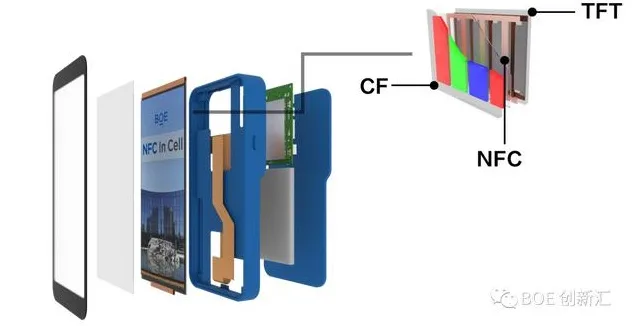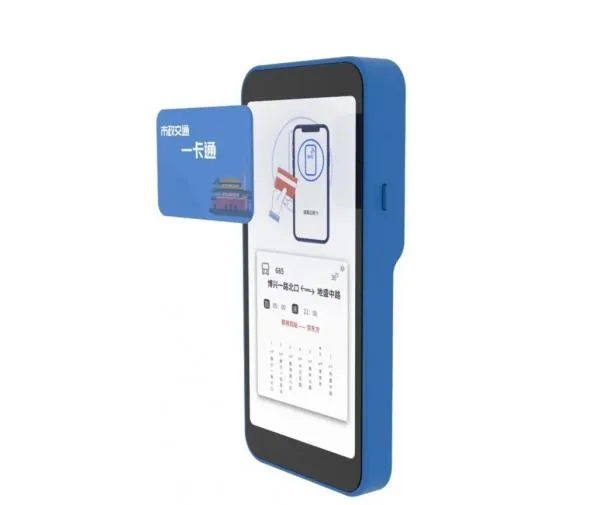Near field communication (NFC) on a phone works as a set of communication protocols that enable two electronic devices to communicate with each other. NFC is based on RFID technology, which uses electromagnetic fields to automatically identify and track tags attached to objects. It is essentially a branch of high-frequency (HF) RFID and operates at the 13.56 MHz frequency.

At the heart of an NFC configuration on a phone is the NFC chip which is responsible for managing the NFC communication protocols. It handles the modulation and demodulation of signals, as well as the processing of the data received and transmitted. In some designs, this chip is integrated with other wireless communication chips, like Bluetooth and Wi-Fi, into a single module.
BOE has developed an LCD NFC In-cell in-screen integration solution that integrates the NFC coil into the LCD display. This allows for front-facing card swiping directly on the screen, with an interface that shows the user exactly where to hold their card. In NFC readers and tags, the NFC coil is connected to an NFC chip that modulates and demodulates the signals being transmitted and received. When an NFC reader’s coil is brought close to an NFC tag’s coil, the two coils couple together through their magnetic fields. This allows data communication to occur wirelessly over a short distance.

BOE uses a grid design to integrate the NFC coil onto the TFT substrate without needing additional mask layers. This reduces the impact on the pixel display area. A higher conductivity metal reduces coil impedance and improves antenna performance and signal strength compared to traditional NFC readers, claims BOE. By eliminating the need for a separate NFC antenna component, you can achieve other savings in terms of space and power.
Existing under-screen NFC solutions can experience interference between the NFC driver and touch signal. BOE handles this through a time-sharing drive solution. Touch capabilities are enabled through TDDI (touch and display driver integration) by adding transmission signal lines within pixels. When NFC interference is high and sustained, touch points are reduced or halted to prevent simultaneous operation. When interference is low and brief, a noise filtering algorithm enhances the TDDI IC’s ability to filter NFC noise for non-interfering coexistence.

